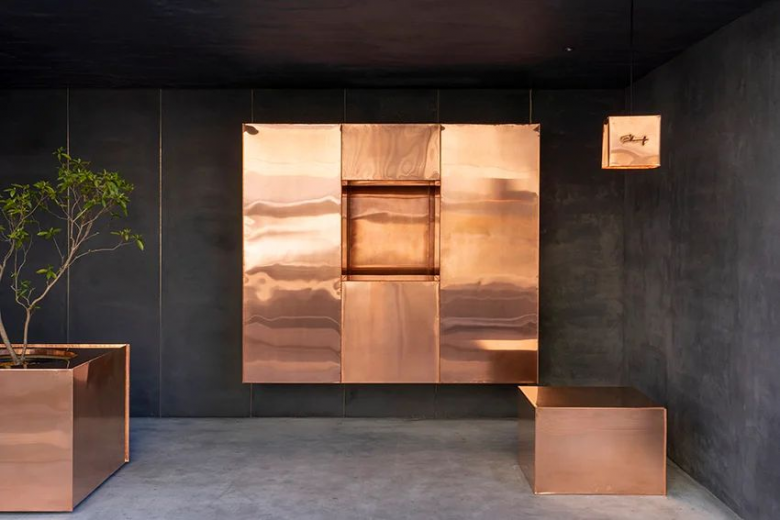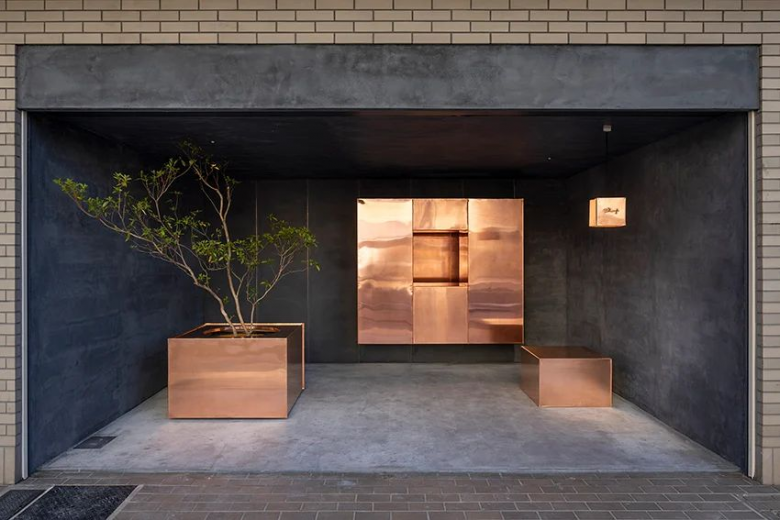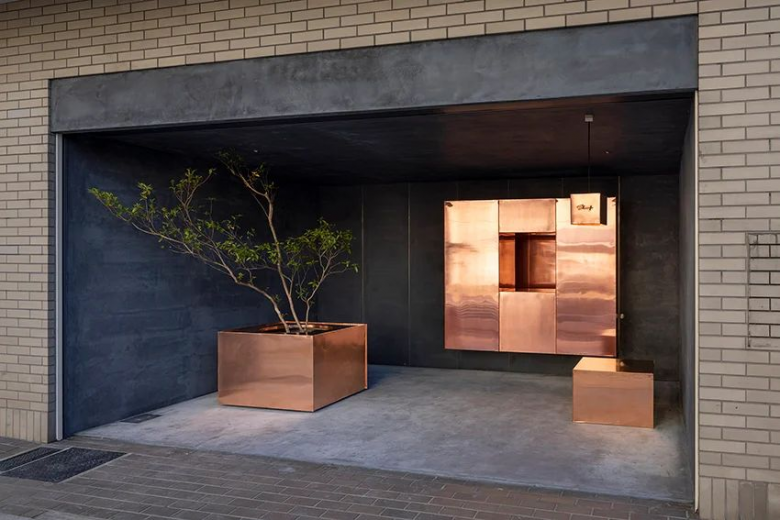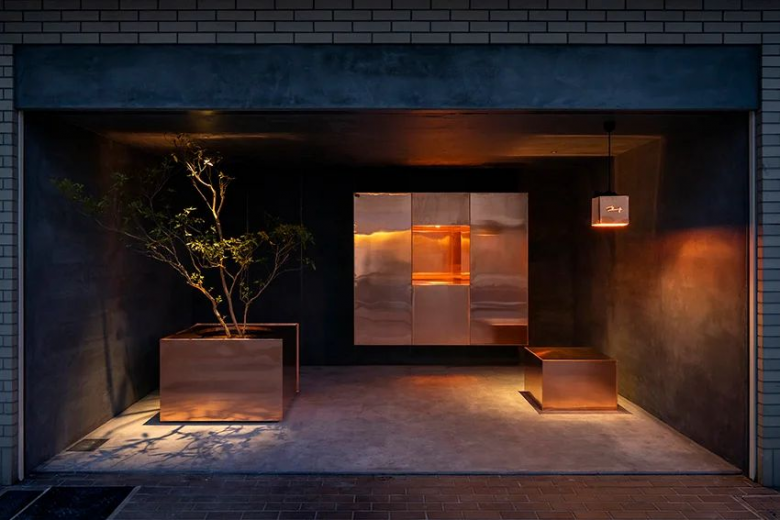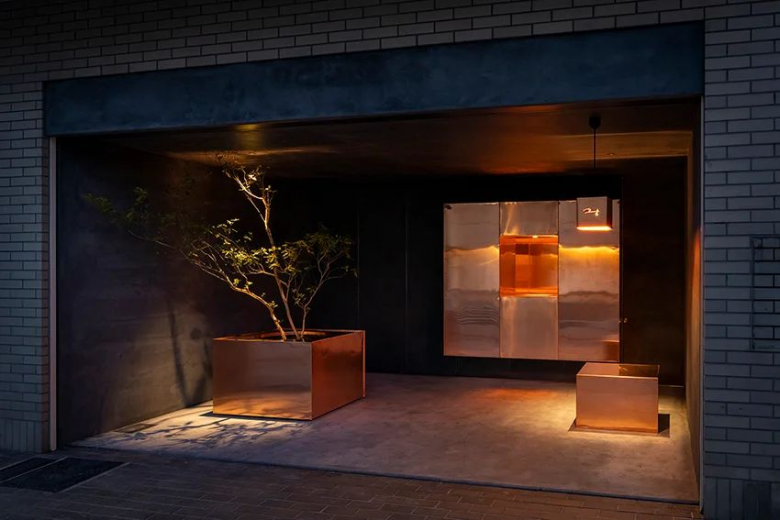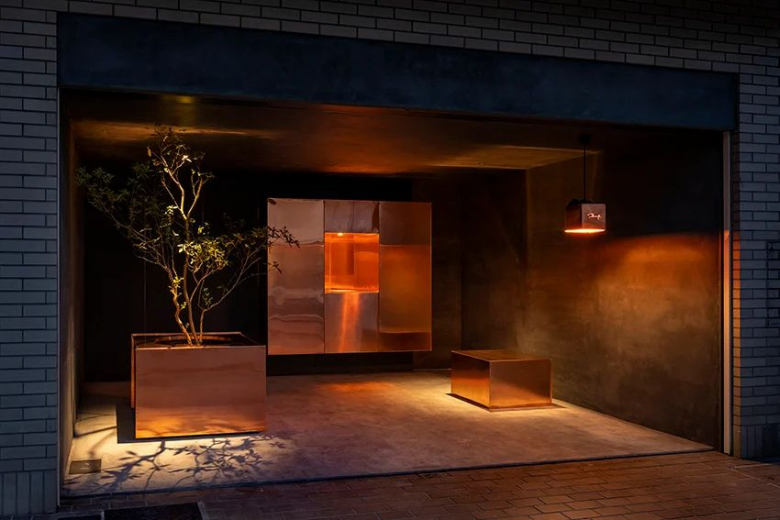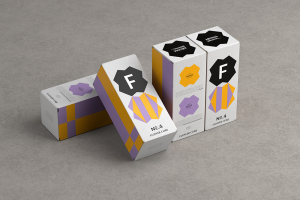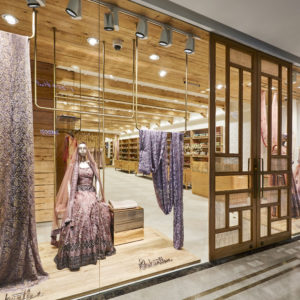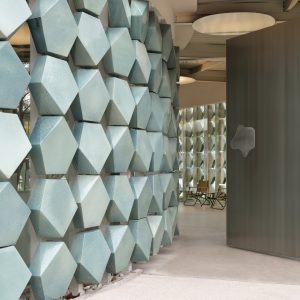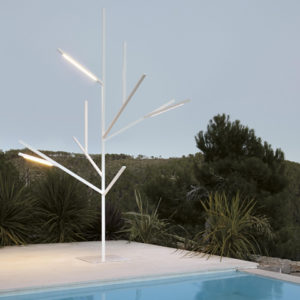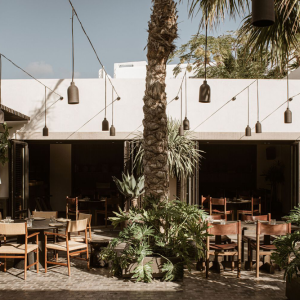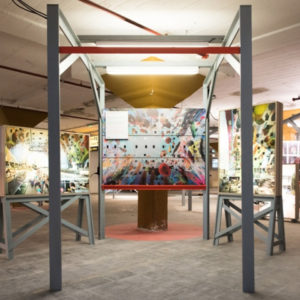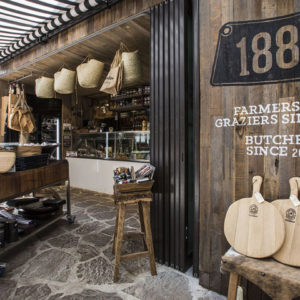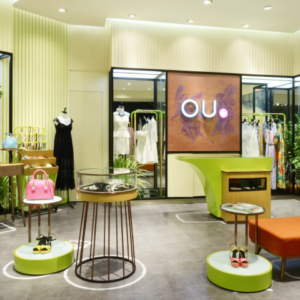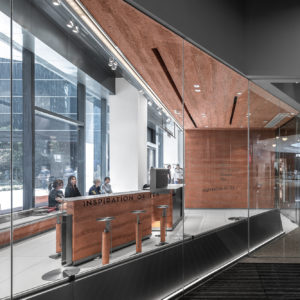

Located on a quiet residential area near Himeji Castle, Japan, ‘Co Hareruya’ by Arbol Design, is a ‘brewery in a cave where koji mold is floating’. The store — that manufactures and sells homemade foods using koji mold — takes shape as a dark box, where glittering copper plate cubes float in the air while the walls, ceiling, and floor are covered with mortar, reminiscent of a pitch-black cave with sources of light glowing within. The walls are divided into seven parts both vertically and horizontally, subtlety expressing the appearance of an inviting old Japanese building, promoting feelings of nostalgia.
Arbol Design sought to provide visitors with the illusion of becoming koji mold floating in nature, space, and time. Since the opening ratio of the space being regarded as a cave was approximately 1:2, the modal structure found in traditional Japanese architecture was adopted. One of the seven wall panels was designed and constructed as a seamless hidden door to the kitchen.
The product delivery port uses the reflection of the copper plates to emit soft light from the inside. The staff standing within the copper plate cube floating on the wall and the accompanying lighting are devised so that the product naturally has attention drawn towards it. After sunset, natural daylight gives way to a different expression of lighting within the cave.
The handcrafted principal cube made of copper is unified with the copper planting cover, bench, and pendant light to dynamically express the koji mold, which is the source of fermentation. All copper finishes are crafted by skilled sheet metal craftsmen, producing unique results unlike the perfection created using precision machines. Even though there is an overall sense of ruggedness, the warmth, and gentleness of the craftsmanship exhibit the same qualities as the koji mold-making process, and it is a culture that the architects wanted to communicate to the visitors who would incorporate it into their daily lives.
Designed by Arbol Design
